Japan is an island country in East Asia. Located in the Pacific Ocean, it lies to the east of the Sea of Japan, the East China Sea, China, Korea and Russia, stretching from the Sea of Okhotsk in the north to the East China Sea and Taiwan in the south. The kanji that make up Japan's name mean "sun origin", and it is often called the "Land of the Rising Sun". Japan is an island nation in the Pacific Ocean with high-rise-filled cities, imperial palaces, mountainous national parks and thousands of shrines and temples. Tokyo, the crowded capital, is known for its neon skyscrapers and pop culture. In contrast, Kyoto offers Buddhist temples, Shinto shrines, gardens and cherry blossoms. Sushi, the national dish, is served everywhere from casual pubs to gourmet restaurants.
34 Top Rated Tourist Attractions in Japan
1. Mount Fuji
Mount Fuji is the highest mountain in Japan at 3,776 meters (12,388 ft). The volcano’s exceptionally symmetrical cone is a well-known symbol of Japan and it is frequently depicted in art and photographs, as well as a popular tourist attraction for sightseers and climbers. An estimated 200,000 people climb Mount Fuji every year, 30% of whom are foreigners. The ascent can take anywhere between three and eight hours while the descent can take from two to five hours. Mount Fuji has for centuries been celebrated in art and literature, and is now considered so important an icon that UNESCO recognized its world cultural significance in 2013. Part of the Fuji-Hakone-Izu National Park, Mount Fuji is climbed by more than a million people each summer as an act of pilgrimage that culminates in watching the sunrise from its summit.

2. Sangaku National Park and the Japanese Alps

Japan boasts a number of outstanding areas of natural beauty, many of them designated as national parks or, in some cases, UNESCO World Heritage Sites. One of the country's most spectacular parks is Chūbu-Sangaku National Park in the center of Honshu, incorporating in its northern and central regions the group of mountains collectively referred to as the Hida Mountains, or Japanese Alps. The region contains some of the highest peaks in the country, including Hotaka at 3,190 meters, and Yari at 3,180 meters. Similar in many ways to the Alps of Central Europe, both in the character of the landscape and in its abundance of snow in winter, the Japan Alps attract large numbers of walkers and climbers in summer and skiers in winter. Of particular interest is the park's abundance of flora and fauna, including the rare ptarmigan and mountain antelopes found at higher altitudes. The park's many hot springs also draw visitors and led to the development of various spas and holiday resorts, the best known being Kamikōchi.
3. Nara Park (Nara)
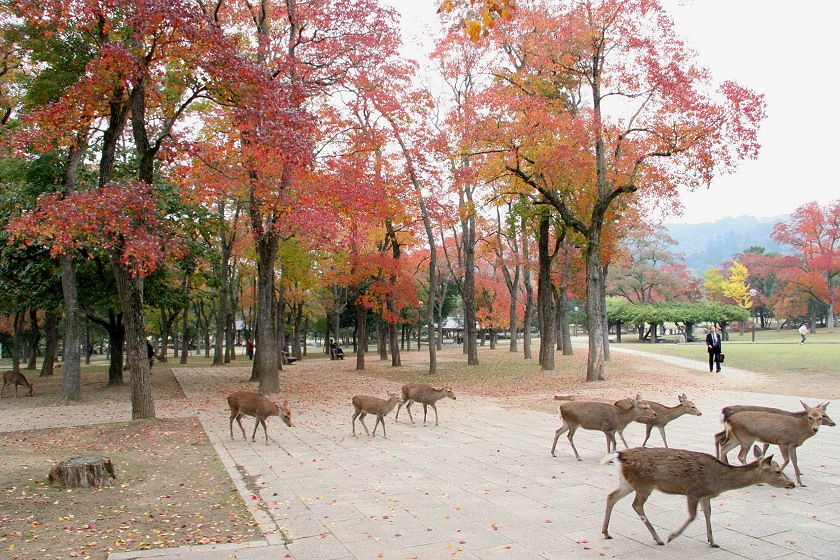

Nara Park is home to the famous Todai-ji temple with a giant Buddha. However, it is also known for the thousands of deer that just wander freely around the grounds. The spacious Nara Park is one of two places in Japan where visitors can mingle with freely roaming packs of deer (the other being Hiroshima Prefecture’s Miyajima Island).
4. Jigokudani Monkey Park
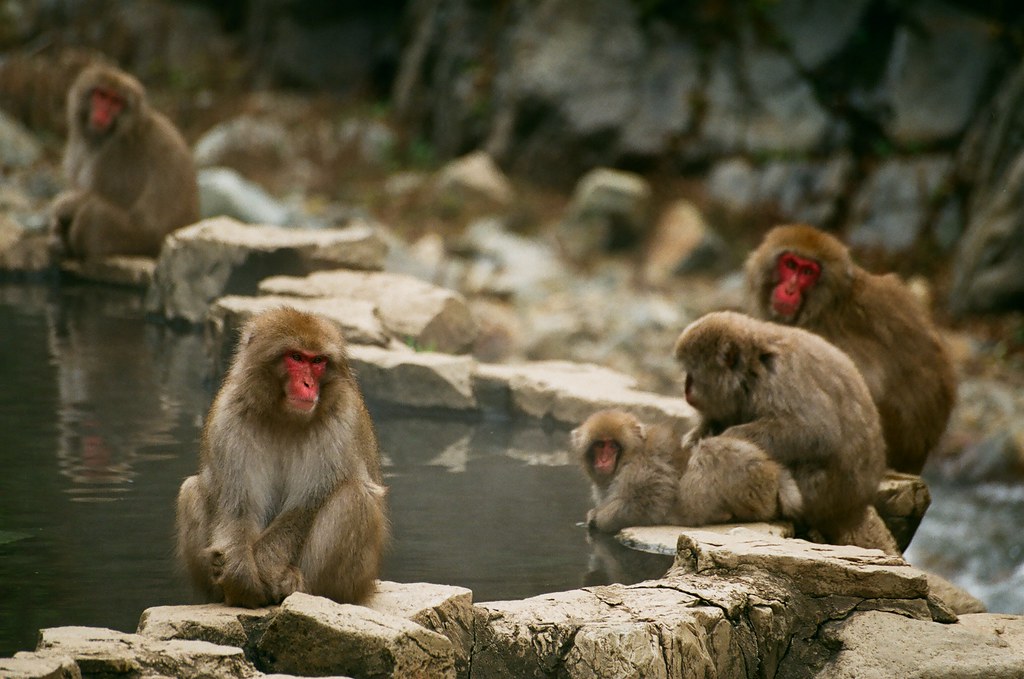
Jigokudani Monkey Park is a famous hot spring area near Nagano,. The name Jigokudani (meaning “Hell’s Valley”), is due to steam and boiling water that bubbles out the frozen ground, surrounded by steep cliffs and formidably cold forests. It is famous for its large population of wild Snow Monkeys that go to the valley during the winter when snow covers the park. The monkeys descend from the steep cliffs and forest to sit in the warm hot springs, and return to the security of the forests in the evenings. “Jigokudani” means “Hell’s Valley,” but the only hellish thing about this park is the steam and bubbles of boiling water coming out of the ground due to the hot springs (onsen). (Don’t worry, it’s not dangerous, unless the water ices over – then be careful.) Otherwise, if you think you’ll be seeing monkeys here, you’re right: Japanese macaques, or snow monkeys, just hang out in the onsen during the winter days and go home to the forest after nightfall.
5. Hiroshima Peace Memorial


The Hiroshima Peace Memorial is a haunting tribute to the lives lost when the atomic bomb was dropped on Hiroshima on August 6, 1945. Set in a park, the memorial features Genbaku Dome, the only building left standing in the vicinity after the bomb dropped. This harsh reminder of a world at war reminds visitors of the importance of human life and honors the victims so they will never be forgotten. Another must see in Japan is the Hiroshima’s Peace Memorial Park which is dedicated to those killed from the atomic bomb attack. This museum provides a history of the bomb and it also has a curved A-Bomb Dome that stood as a symbol of peace, glimmering especially during sunset.
6. Historic Kyoto


One of Japan's most visited cities, lovely Kyoto - one of the few cities in the country to be spared the devastation of WWII - attracts more than 10 million visitors annually to explore its fine old streets and architecture, much of it unchanged since the Imperial family took up residence here more than 1,000 years ago. Even then, the city was Japan's most important cultural center, a legacy that continues with its many museums and art galleries, each bursting with important sculptures, paintings, and other art forms. Highlights of Kyoto's Buddhist-influenced architecture include its many well-preserved temples, 30 of which are still in use, and important structures such as the 14th-century Golden Pavilion (Kinkaku-ji), famous for its exquisite gold-leaf-clad exterior. Be sure to also visit Nijo Castle, a 17th-century fortress that has retained its original walls, towers, and moat; its beautiful gates; and its palace with fine interior décor. Also worth a visit is the original Kyoto Imperial Palace (Kyoto-gosho), built in AD 794 and one of the city's most visited historic sites. Finally, no visit to Kyoto is complete without spending time exploring the Arashiyama Bamboo Grove, a beautiful area of tall bamboo just a few minutes' walk from the town center.


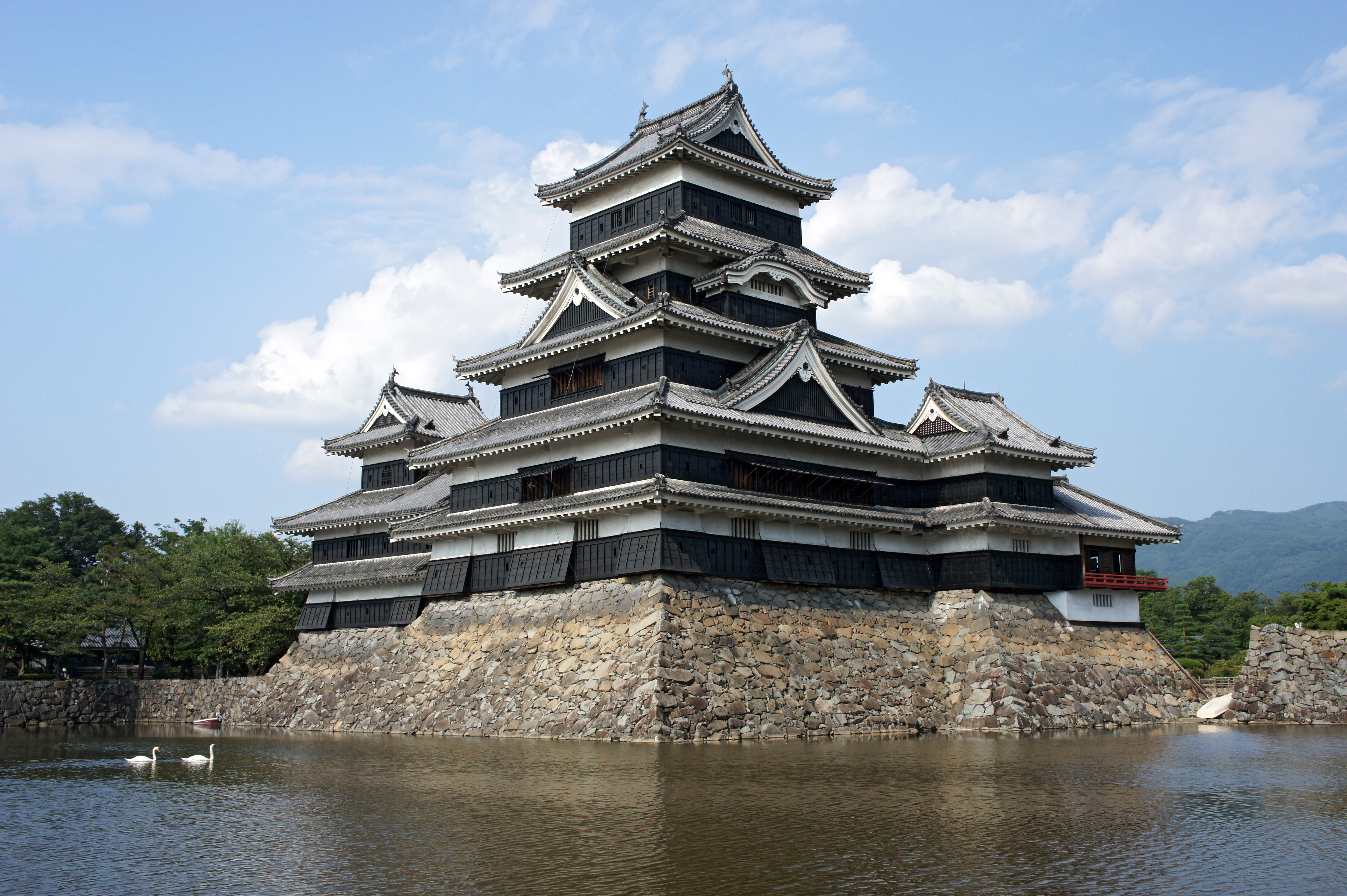
7. Himeji Castle

Himeji Castle is one of Japan’s best preserved samurai castles and is a must see for any castle lover. The castle is fondly known as “Shirasagi-jo”, which means White Heron Castle in Japanese due to its brilliant white exterior and its resemblance to a heron taking flight. It was one of Japan’s first UNESCO World Heritage Sites when registered in 1993, and is one of the few original castles remaining in Japan from the samurai age. The Himeji Castle is considered the best existing example of Japanese castle architecture. It was fortified to defend against enemies during the feudal period, but it has been rebuilt many times throughout the centuries and reflects the different design periods. It survived the bombings of World War II and is frequently seen in domestic and foreign films, including the James Bond movie “You Only Live Twice”. The white exterior and design give the castle the appearance of a bird taking flight, earning the the castle the nickname ‘white egret castle’.
8. Osaka Castle

Built in 1586 by famous Japanese warrior and politician Toyotomi Hideyoshi, Osaka Castle (Ōsaka-jō) was at the time the largest and most important fortress in the country. Although destroyed and rebuilt a number of times since, the present structure, built in 1931, remains true to the original. Highlights of a visit include the huge five-story, 42-meter-tall main tower built on an imposing 14-meter-tall stone base and home to a number of displays detailing the history of the castle and the city (be sure to visit the top floor for its superb views over Osaka). Also of interest in Osaka Castle Park is the Hokoku Shrine, while Osaka's best-known temple, Shitennō-ji, is also worth visiting and dates back to AD 59. Notable as Japan's first Buddhist temple, this lovely shrine features a five-story pagoda along with a number of other exquisitely decorated buildings including the Golden Pavilion (Kondō) with its fine statues and paintings, the Lecture Hall (Kōdō), and a lovely covered corridor linking three of the site's gates.
9. Matsumoto Castle

Matsumoto Castle is one of Japan’s main historic castles and is sometimes called the “Crow Castle” because of its black color. One of Japan’s most impressive original wooden fortresses, Matsumoto Castle’s location in the middle of Matsumoto City makes it an easy visit for those also looking to hike in the mountains of nearby Kamikochi. This black castle, which is aptly known as the Crow Castle (Karasu-jo), is one of Japan’s famous historical castle. Matsumoto castle is located in Nagano Prefecture not far off from Tokyo. It is a flatland castle (Hirajiro) cause unlike Himeji Castle mentioned above, it is not built on a hilltop or amidst any rivers but just on plains. It is consists of extensive systems of interconnecting walls, moats and gatehouses. Definitely, a castle that one would marvel with.
10. The Atsuta Shrine


The Atsuta Shrine, in the heart of the city of Nagoya, is the most important Shinto shrine in Japan attracting more than five million visitors each year. Established in the first century, this religious site is famous for its preserved Imperial insignia, the "grass-mowing sword" (kusanagi-no-tsurugi), one of only three in the country. Also of interest are its principal shrine, Hongu, surrounded by an enclosing wall, and the treasury with its numerous works of art including old and modern paintings, ceramics, jewelry, and traditional masks. While in Nagoya, be sure to also visit Nagoya Castle, a splendid moated complex built in 1612 boasting a 48-meter-high main tower that is famous for its two gilded dolphins (shachi), its museum containing art treasures from the former palace, and its spectacular views over the city and the Nobi Plain.
11. Magome

Magome-juku was the forty-third of the sixty-nine stations of the ancient road that connected Kyoto and Edo (today's Tokyo) during the Edo period. Nowadays it consists of a beautifully restored row of wooden houses along the former post road. Most houses were built in the mid-18th century by common people and therefore are nothing grant, just extremely interesting. They host shops, restaurants and little exhibition rooms, which makes a day trip to Magome both a relaxing and educative one. In my opinion, Magome is a cute open air museum stripped of the joys of daily life, lined along a pedestrian-only cobblestone street, which makes it quite unusual and unique. Also, only a 3-hour hike away, there is the post town of Tsumago, and if you have time, the hike and the town in itself are worth the trouble.
12. Miraikan


If the above description of Odaiba hasn’t quite convinced you it’s worth visiting, the island is also home to the Miraikan. Alternatively called the Future Museum and the National Museum of Emerging Science and Innovation, the Miraikan houses displays on aerospace engineering, genetics, and is also the sometimes-residence of Honda’s robotic ambassador Asimo.
13. 21st Century Museum of Contemporary Art


In contrast to Kanazawa’s traditional Kenrokuen Garden, the city’s art museum takes a much more modern approach to aesthetic appreciation. Among the facility’s unique design premises are a lack of a designated main entrance, in order to help visitors experience the exhibits without the limitations of preconceptions.

14. Mori Art Museum

The Mori Art Museum is a contemporary art museum that showcases traveling/temporary exhibits. It is located inside the Roppongi Hills complex, at the top of the Mori Tower. Even if you’re got only a passing interest in high art, the vires from the attached observation deck, high above the Roppongi Hills entertainment complex, is a great way to get a grasp of the massive scale of Tokyo.
15. Kiyomizu-dera
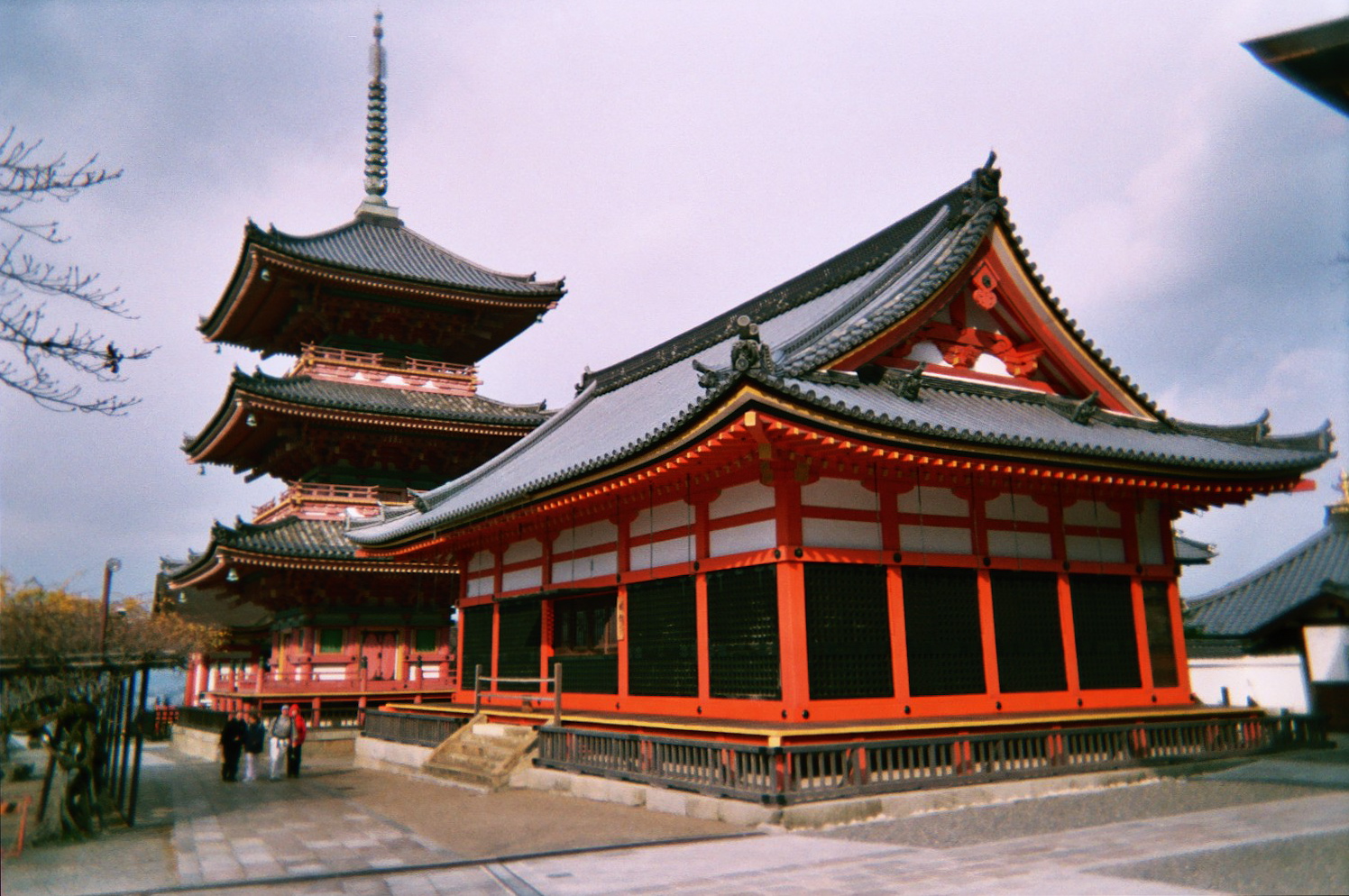
Kiyomizu-dera is one of the must-see temples in Kyoto and is a UNESCO World Heritage site. It is easily recognized by its large veranda, which overlooks the mountain the temple stands on. The trees are most brilliant during the fall foliage season. The Kiyomizu-dera Buddhist temple is located in Eastern Kyoto and can be traced back as far as the year 798. An indoor waterfall fed from the outside river keeps the temple in harmony with nature and not one nail was used in construction. While locals used to jump off the edge to have a wish granted (with a survival rate of 85.4%), modern visitors can enjoy the shrines and talismans and artwork on display without risking life and limb.
16. Todaiji Temple


The Todaiji Temple in Nara is a feat of engineering. It is not only the world’s largest wooden building, it is home to the world’s largest bronze Buddha statue. Surrounded by beautiful gardens and wildlife, the Kegon school of Buddhism is centered here and the grounds hold many artifacts of Japanese and Buddhist history. Deer are allowed to freely roam the grounds as messengers of the Shinto gods.
17. Tokyo Tower
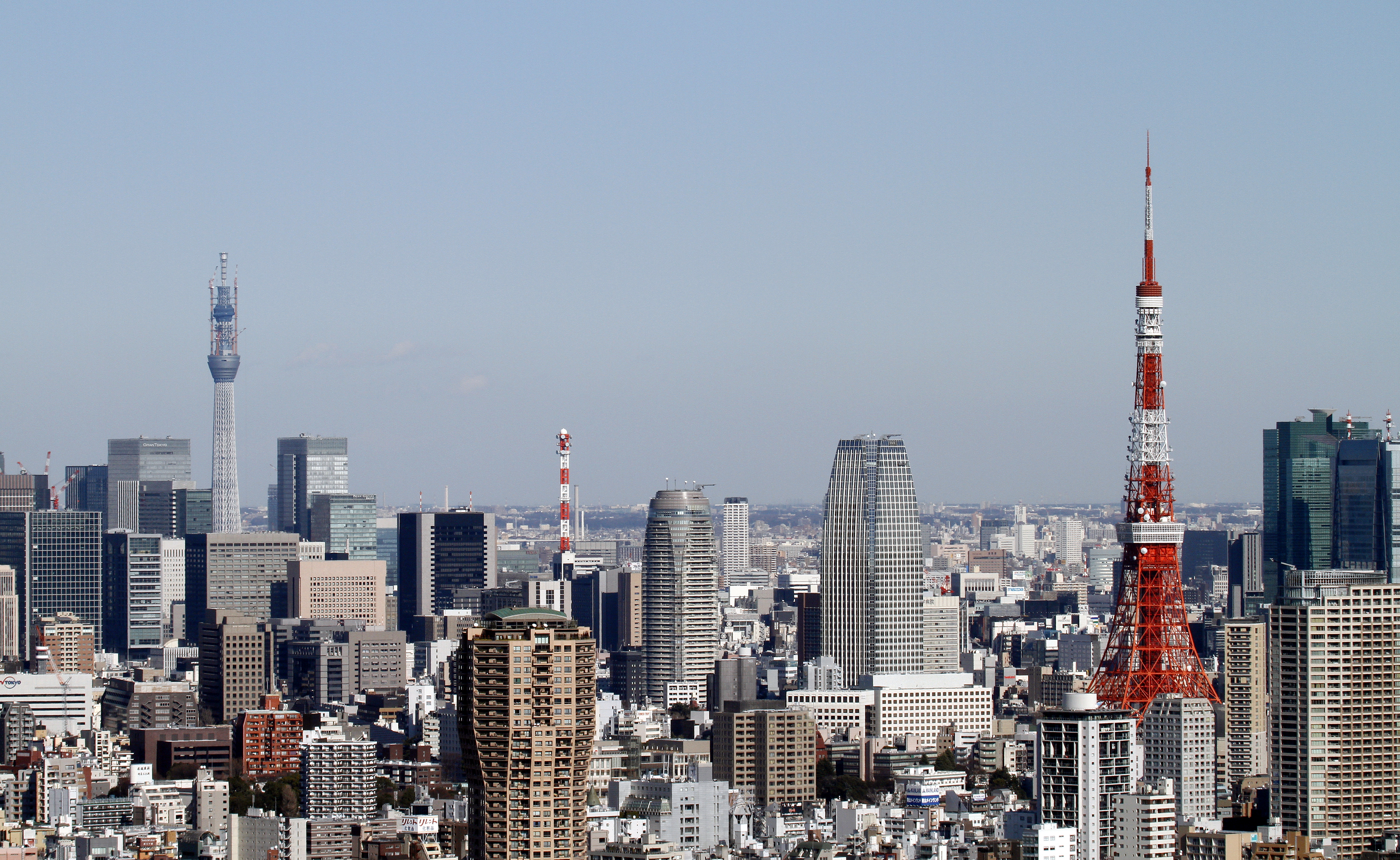

The Tokyo Tower is a testament to the advancement of technology and modern life. Inspired by the Eiffel tower design, it is the second tallest man-made structure in Japan and functions as a communications and observation tower. Visitors can climb the tower for unparalleled views of Tokyo and the surrounding areas as well as visit shops and restaurants. It may not be as tall as its younger sibling, the Tokyo Sky Tree, but 333-meter (1,093-foot) tall Tokyo Tower still offers spectacular views and looks great in its iconic crimson. Even better, unlike the Sky Tree, you don’t need to make a reservation ahead of time to go up to Tokyo Tower’s observation decks.
18. The Island Shrine of Itsukushima


Just a short ferry ride from mainland Hiroshima is the island of Miyajima, famous the world over as Japan's Shrine Island. Covering an area of 30 square kilometers in Hiroshima Bay, Miyajima is best known as the home of the Itsukushima Shrine, a Shinto temple dedicated to the Princess daughters of the wind god Susanoo. Dating from the eighth century, the majority of the shrine's buildings rise out of the waters of a small bay supported only by piles. The effect at high tide is simply stunning, making these structures - including the famous Great Floating Gate (O-Torii) - appear as if they're floating on water. Linked together by walkways and bridges, it's a fascinating place to explore, in particular its larger halls such as the exquisite Honden (Main Hall), the Offerings Hall (Heiden), the Prayer Hall (Haiden), and the Hall of a Thousand Mats (Senjokaku). Another notable feature is the shrine's stage where visitors are entertained with traditional dances and musical performances. Also worth exploring are the island's exquisite grounds and gardens, home to wild deer and numerous bird colonies.
19. Kaiyukan

The Osaka Aquarium Kaiyukan was voted best aquarium in Asia by TripAdvisor users and is also ranked as the 13th best aquarium in the world. Its aim is to recreate the natural environment of the surrounding ocean and contains several interactive and world-leading exhibits. Osaka makes the list once again with its aquarium, the Kaiyukan. While the building does have a unique exterior design, we’re guessing its high ranking is a direct result of its awe-inspiring whale shark. Try to synchronize your visit with its feeding time, when the gentle giant opens its mouth wide and sucks in the surrounding water like a colossal vacuum cleaner in order to get its fill of tasty plankton.
20. Sanjusangen-do

Sangusangen-do is an active Buddhist temple in Kyoto. Its name literally translates to “hall with thirty-three spaces between columns,” which is exactly how the hall was built. Inside, you can see a thousand statues of the housed deity, the Thousand-Armed Kannon, most of which date from the 13th century.
21. Okinawa Churaumi Aquarium


The Churaumi Aquarium – which is named for “chura,” or the Okinawan word for “beautiful/graceful,” and “umi,” the Japanese word for “ocean” – is part of the Ocean Expo Park in Okinawa. It was once the largest aquarium in the world, until 2005.
22. Shinjuku Gyoen
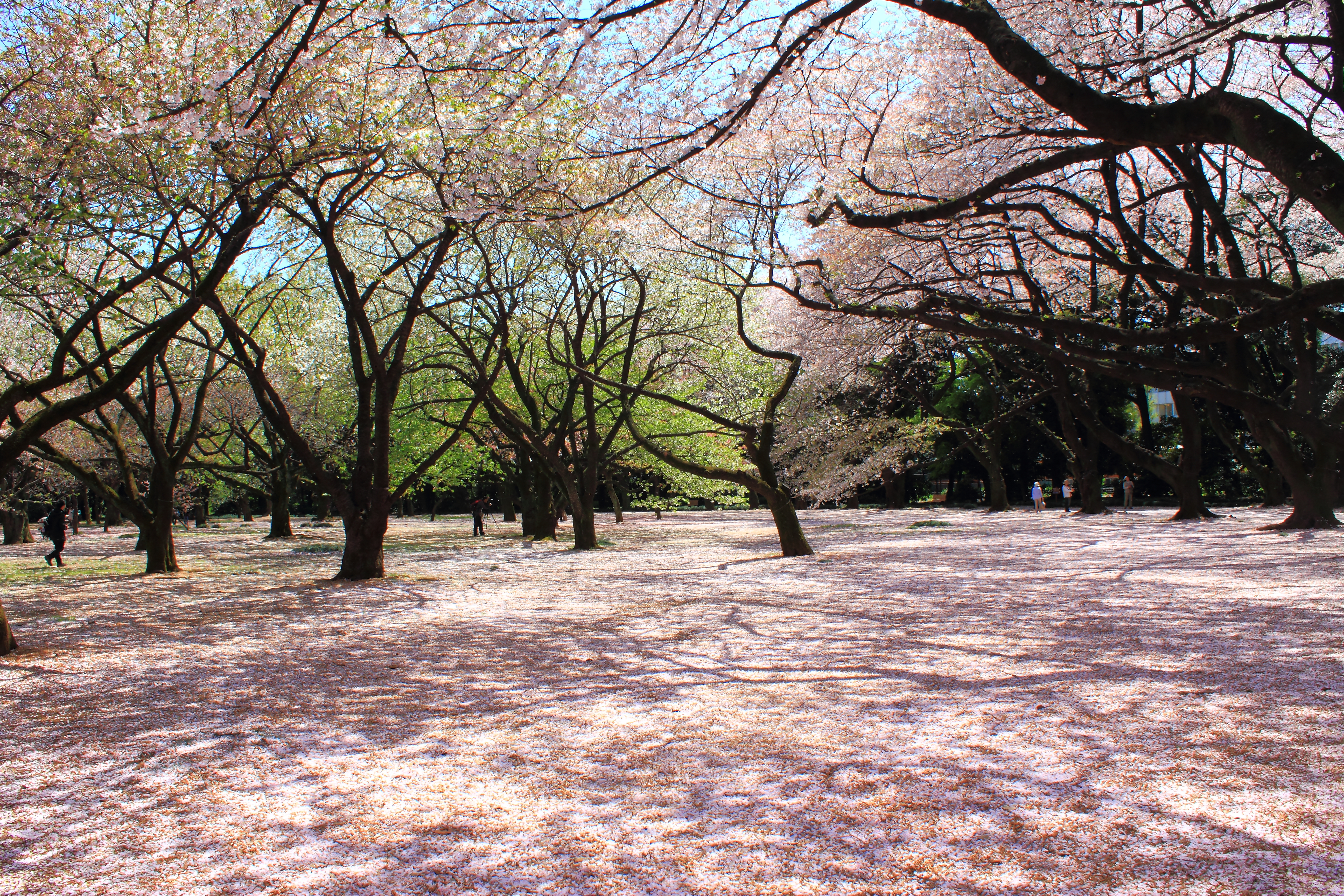
Shinjuku Gyoen is another one of Tokyo’s famed “escapes” as it is a large garden in the middle of one of the busiest areas of the city. During the Edo period, it was a private residence, but it has come under the control of the Ministry of the Environment. It contains French, English and Japanese garden sections. One more reason why you shouldn’t believe people who tell you, “There’s no greenery in central Tokyo!”
23. Kinkaku-ji
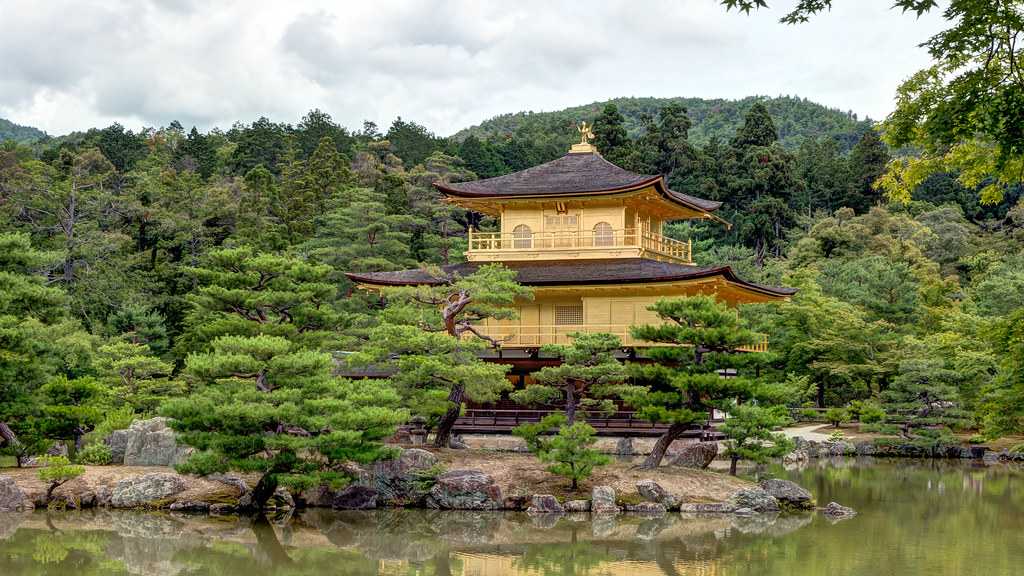

Kinkaku-ji, or the Temple of the Golden Pavilion, is perhaps one of the most well-known temples in the world. It is a Zen Buddhist temple that is mostly covered in gold leaf and is surrounded by a garden from the Muromachi era, which is when Japanese garden designs flourished.
24. Fushimi Inari Shrine

The top spot went to Fushimi Inari Shrine, and the seemingly endless tunnels of torii gates that cover the hillside it’s built on. Long overlooked due to its distance from other Kyoto attractions it’s still just a short train ride away from Kyoto Station, and one of the most unique experiences travelers can have in Japan. Dedicated to Inari, the deity of rice and agriculture, the buildings of Fushimi Inari Shrine are scattered across a mountain crisscrossed by walking paths. Along the way, hundreds upon hundreds of tori gates donated by the faithful form virtual tunnels with slivers of sunlight seeping through the narrow gaps between them.
25. Kamakura


Kamakura, also called the Eastern Kyoto of Japan for the great number of temples, is a quiet little residential town just 1-hour train ride from Tokyo. For that, Kamakura can make a very pleasant and relaxing day trip away from the hustle and bustle of Tokyo. Its most famous sight is the Great Buddha (Daibutsu) at Kotoku-in, the second largest bronze Buddha in Japan. But there are many Zen temples and Shinto shrine to be discovered here and one day might not even be enough to explore them all. However, if you get tired of temple and shrine hopping, I highly recommend you join a Japanese cooking class, so apart from the photos, you also take home with you the knowledge of how to cook traditional Japanese food. Why do I recommend this cooking class? Because you will learn washoku, an approach to achieving nutritional balance and aesthetic harmony at the table, which is a Japanese culinary philosophy that has been added to the UNESCO intangible cultural heritage list.
26. Dotonbori


Dotonbori is one of the main entertainment, food and shopping areas of Osaka that runs along the Dotonbori canal. It is often known as the place where the Glico Running Man sign is displayed. Osaka’s foremost entertainment district is at its most dazzling after dark, where the light from the towering walls of neon signage reflect off the canal and enwraps you in its glow from all angles. The center of Osaka’s vibrant entertainment scene, Dotonbori is at its most impressive at night, with the neon from its towering billboards reflecting off the waters of the canal that bisects the district. Speaking of the canal, it’s tradition for fans of the local baseball team, the Tigers, to dive into it from the pedestrian bridges following a big win.
27. Umeda Sky Building/Floating Garden Observatory


At just 40 stories tall, the Umeda Sky Building might not seem like anything to get excited over, especially in a country where skyscrapers are a dime a dozen. What makes it special, though, is the final approach to its open-air rooftop observation deck: an escalator with nothing between it and the ground some 173 meters (568 feet) below.
28. The Phoenix Hall at Byodo-in Temple

The Phoenix Hall at Byodo-in Temple is regarded as Japan’s most beautiful building. If you want a preview, take a look at the back of a ¥10 coin, where you can see an image of this elegant building. The building is one of the few original wooden structures to survive from the Heian Period (710 – 1185), and is one of Kyoto’s many UNESCO World Heritage Sites.
The Tottori Sand Dunes span 16 kilometers long and two kilometers wide and are the only large sand hills in Japan. The dunes are a blend of sand and volcanic ash mixed over a period of almost 100,000 years then shaped by winds from the Sea of Japan. Part of the San'in Kaigan Geopark, they can be experienced via camel rides, dune buggies and sandboarding.
30. Lavender farm


Farm Tomita has three lavender fields: Lavender East, Sakiwai Field and the Traditional Lavender Garden. Sakiwai Field, meaning "happiness field," has four types of lavender growing in rows, creating a gradient of purple with the rainbow colors of Autumn Field, Spring Field and Hanabito Field as background.
31. Gokayama


Gokayama is one of the greatest towns for architecture buffs in the world.
The oldest traditional gassho style house in Ainokura is said to be about 400 years old. Part of the UNESCO-designated area of Gokyama, the village preserves an architectural design that dates back hundreds of years. The steep triangular thatched roofs were built without the use of nails and are designed to prevent snow buildup.
32. Tokyo DisneySea


Tokyo DisneySea, situated adjacent to Tokyo Disney Land, focuses less on rides and more on atmosphere, attracting attendees with its numerous shows and parades in settings recreating Venice, New York, and Arabia. Geography purists should take note that Tokyo DisneySea, much like Tokyo Disneyland, the Tokyo Auto Show, and Tokyo Narita Airport, is not in Tokyo, but instead Chiba Prefecture, which borders the capital to the east. Tokyo DisneySea, the 4th most-visited theme park in the world is also the 9th park of the 11 worldwide Disney theme parks to open.
33. Universal Studios Japan

USJ (as it’s called by the locals) may not have ever been the filming location for classics of the silver screen, but it does have numerous attractions based on blockbuster hits (Jurassic Park, Spider-Man), as well as movies without such lasting or positive impressions (Backdraft, Water World). If you’re wondering what USJ offers that you can’t get at its sister parks in Los Angeles or Orlando, maybe you’ll find the answer at the Osaka park’s Hello Kitty Fashion Avenue section.
34. Seagaia Ocean Dome

The Seagaia Ocean Dome, was one of the world's largest indoor waterparks, located in Miyazaki, Miyazaki, Japan. The Polynesia-themed Ocean Dome, which was a part of the Sheraton Seagaia Resort, measured 300 metres in length and 100 metres in width, and was listed on the Guinness World Records. It opened in 1993, and visitor numbers peaked in 1995 at 1.25 million a year. The Ocean Dome sported a simulated flame-spitting volcano, artificial sand and the world's largest retractable roof, which provided a permanently blue sky even on a rainy day. The air temperature was always held at around 30 degrees Celsius (86 degrees Fahrenheit) and the water at around 28 (82 degrees Fahrenheit).
34. Seagaia Ocean Dome

The Seagaia Ocean Dome, was one of the world's largest indoor waterparks, located in Miyazaki, Miyazaki, Japan. The Polynesia-themed Ocean Dome, which was a part of the Sheraton Seagaia Resort, measured 300 metres in length and 100 metres in width, and was listed on the Guinness World Records. It opened in 1993, and visitor numbers peaked in 1995 at 1.25 million a year. The Ocean Dome sported a simulated flame-spitting volcano, artificial sand and the world's largest retractable roof, which provided a permanently blue sky even on a rainy day. The air temperature was always held at around 30 degrees Celsius (86 degrees Fahrenheit) and the water at around 28 (82 degrees Fahrenheit).


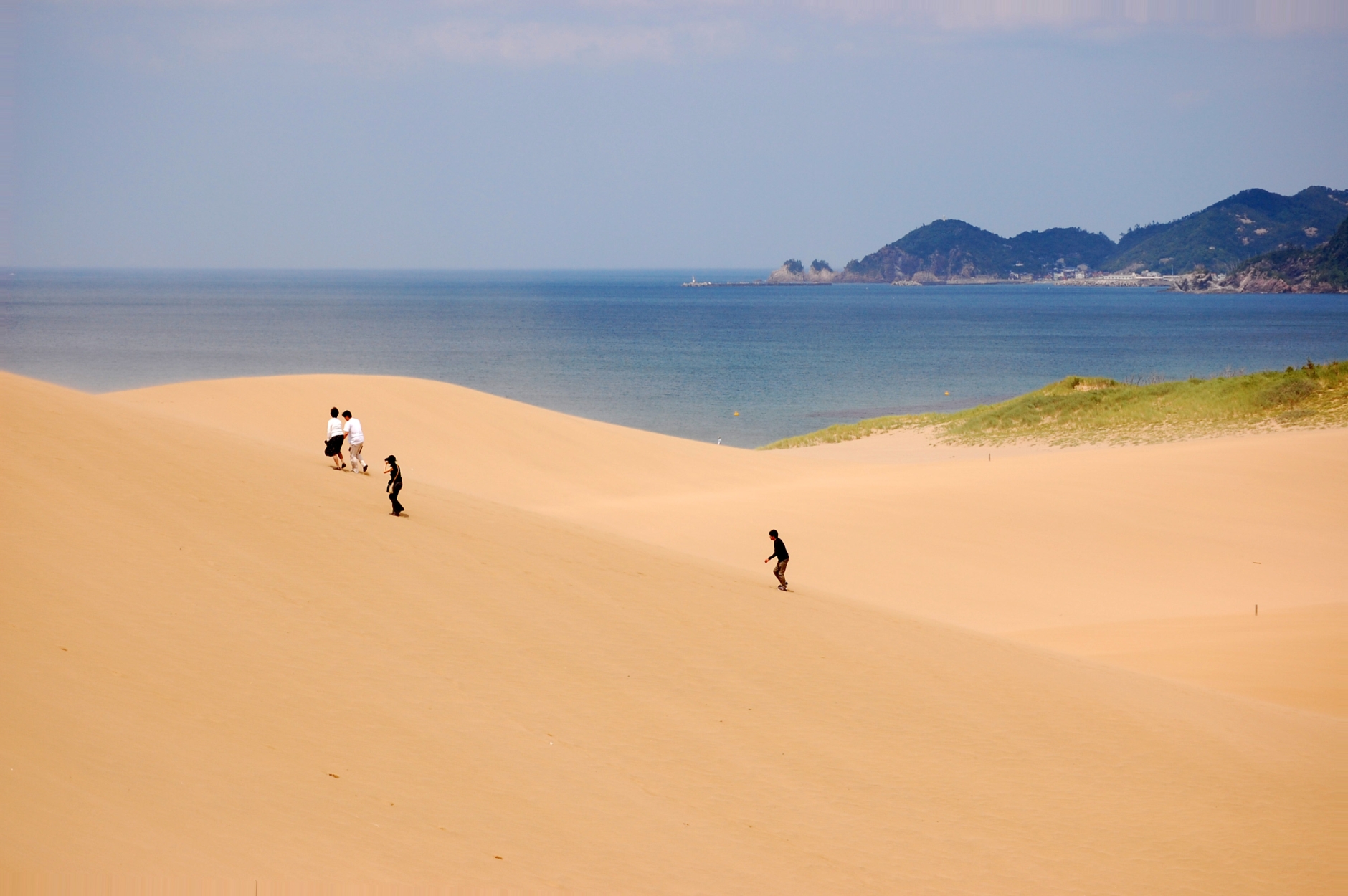










No comments:
Post a Comment